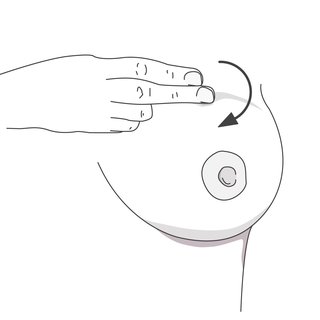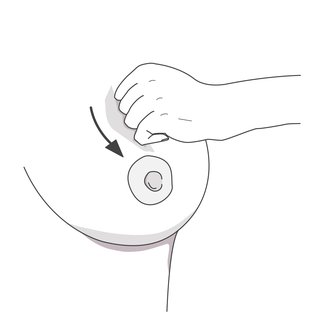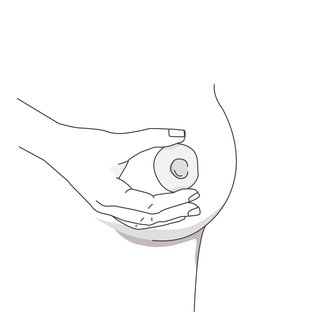Expressing breast milk means gently releasing milk from your breasts, either by hand or with a breast pump. Many mothers find expressing milk a bit tricky at first. It takes time to learn how to do it.
In the early days of your baby’s life, it's very normal to only get a few drops. At this stage, your baby’s tummy is very small and they do not need a large amount.
The way you feel emotionally and psychologically will have an impact on how well you express your milk. Do not worry if you find it difficult at times.
When breastfeeding, your milk flow is caused by:
- hearing your baby cry
- the sight, feel and smell of your baby
- your baby attaching to the breast and sucking
This is known as the let-down reflex. When expressing, you do not have this so you may need some extra support.
Expressing breast milk for a premature or ill baby
Midwife Rebecca O'Donovan shows Mums how to hand express milk (video)
Tips for expressing
If possible, wait until your breast milk supply is established (at around 4 to 6 weeks) before you start to express milk for extra feeds. This lets your milk supply adapt to your baby's needs. Sometimes expressing before this time can lead to a problem with oversupply.
You might find the following tips helpful when you are expressing by hand or pump.
Find a comfortable place to express
If you’re still in the hospital, you may feel more relaxed with the bed curtains pulled.
It can be useful to have your partner or support person with you when your midwife shows you how to hand express.
If you'd like some extra privacy, face away from a window or the place where the bed curtains open.
If you're at home with older children, distract them with a safe activity that does not need your full attention.
Minimise distractions
Turn off your phone, TV and laptop.
Make sure you have everything you need to hand.
This could include:
- a drink
- a snack
- a small towel - to cover up and dry any spillages
Listening to relaxing music can also help.
Connect with your baby
It can be helpful to close your eyes and imagine your baby is feeding at your breast. Looking at a photo or video of your baby can help you relax and connect with your baby before you begin expressing. Having their clothing or blanket with you can also help.
If possible, spend some time together in skin-to-skin contact before you begin to express.
Warmth
Taking a warm shower or putting a warm moist facecloth (warm compress) on your breasts before expressing can help.
Massage your breasts
Massage your breasts before and during expressing. You can massage your breasts while in the shower if you wish.
Gently rolling your nipple between your fingers encourages the release of hormones and helps get your milk flowing.
Expressing milk by hand
To express by hand, follow these steps:
- Wash your hands carefully.
- To help your milk flow, you can sit comfortably, relax and think about your baby, have someone massage your back and shoulders, if possible, warm your breast - a good way to do this is to put a warm facecloth over your breast
- Massage your breasts. This can be done with your fingertips (as shown in image A) or by rolling your closed fist over your breast towards the nipple (as shown in image B)
- Massage firmly as if you were rubbing your baby's face - but no stronger as you may cause damage to your breast tissue.
- Gently roll your nipple between your fingers.
- Place your thumb on one edge of your areola (where the darker part of your nipple joins the lighter skin of your breast) and your second and third finger on the opposite edge of your areola. Your hand should form the shape of the letter C (as shown in image C).
- You then compress and release your breast using rhythmic movements. Press, then release and a little drop of breast milk will appear. Try not to rub or slide your finger or thumb along your nipple as this may hurt. Hand expression is more effective and comfortable when fingers are pushed back toward the chest wall rather than sliding out and toward the nipple. After a little while of compressing and releasing, a few drops of breast milk will appear and you can collect this into a sterile container. This will be provided by a nurse or midwife if you are in a hospital.
- Colostrum (first milk) tends to drip slowly as it is thick. Later, milk may come in spurts or sprays. Continue then to compress, release and collect.
- There are a number of ducts in your breast, so you can stimulate those as well by moving your fingers around the areola to release breast milk from all areas of your breast. Massage your breast as you move your hand around the areola.
- After a while, you will notice the flow from the first breast slows down. You should then move on to the second breast. Once again, begin with heat, then massage, compress and release your breast.
- When you have finished hand-expressing, place a lid on the container and put it into the fridge. Follow the guidelines on storing milk safely.
If these tips fail, try feeding your baby on one breast while expressing from the other side. This usually works.


